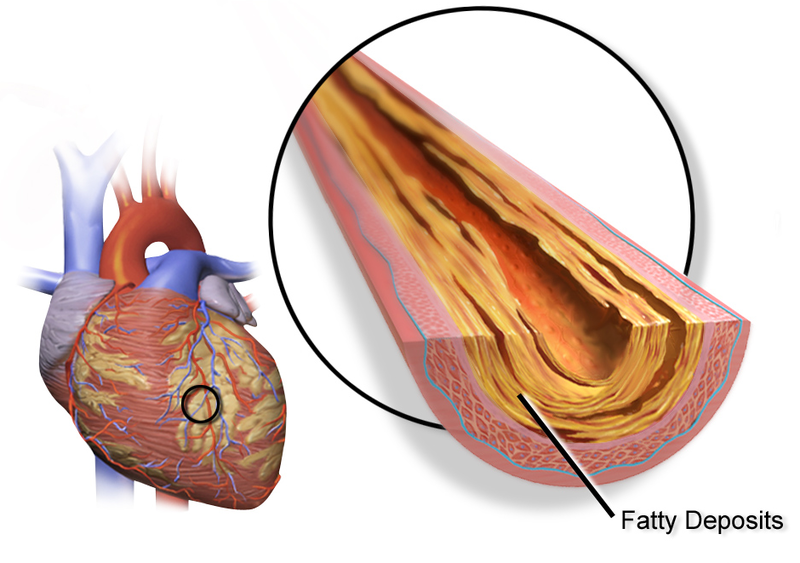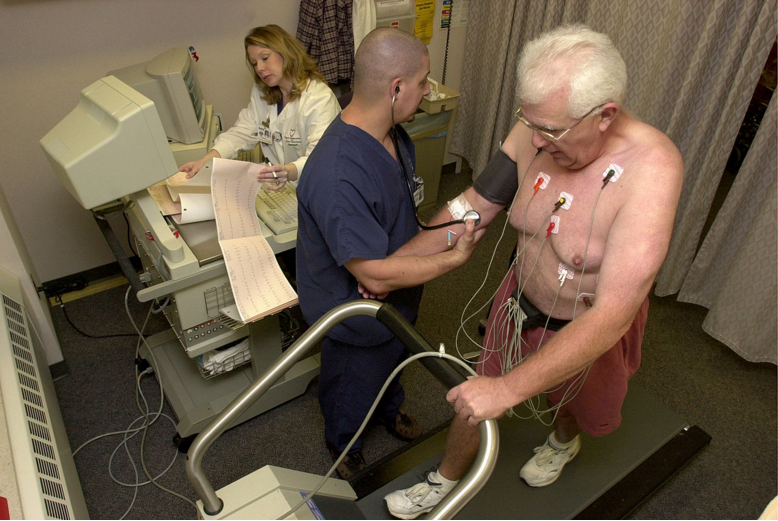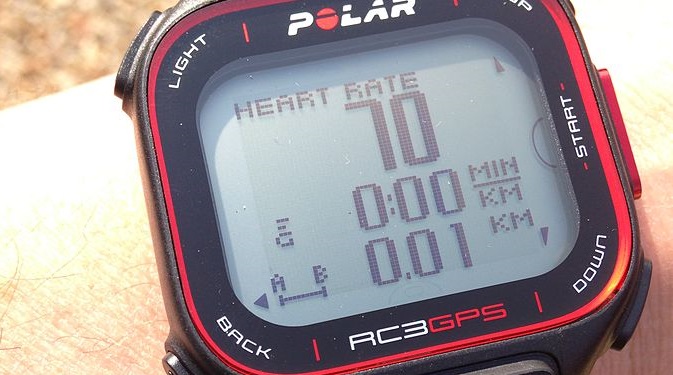You Aorta Know: Facts About Coronary Artery Disease
Ever wondered what it felt like to have a heart attack? The answer is most likely, “Um, not really.” But, there are about 735,000 heart attack survivors each year that could tell you first hand.

Image by Sean McGrath, CC BY 2.0 via Flickr
Heart disease is the leading cause of death and disability for both men and women in the U.S, accounting for about 610,000 deaths annually (more than all cancers combined). Coronary artery disease is the most common type of heart disease.
Activ Doctors Online’s US Medical Director Dr. Howard Zahalsky weighed in on coronary artery disease during an educational webinar, hosted by Activ Doctors Online.
What is coronary artery disease?
The coronary arteries are the three main arteries that go to the heart. The heart needs its own supply of red blood cells carrying oxygen to function properly. In coronary artery disease, plaque can cause blockages in the coronary arteries stemming the vital flow of oxygen which can lead to a myocardial infarction, or a heart attack, where part of the heart actually dies as a result of lack of oxygen.
But, the heart has oxygen-rich blood flowing through it all. the. time. Right?
That’s a valid point. Dr. Zahalsky offers this analogy:
“Think of the heart like a bottled water factory, where oxygen is the bottled water. A worker (the heart) cannot just grab any bottle of water off the line, no matter how thirsty he may be – he has to wait for his break and use the water in the break room. Similarly, the heart needs its own supply of oxygen.”
Coronary artery disease is thought to begin with damage or injury to the inner layer of a coronary artery, sometimes as early as childhood. Once the inner wall of an artery is damaged, fatty deposits (plaques) made of cholesterol and other cellular waste products tend to accumulate at the site of injury in a process called atherosclerosis.

Coronary Artery Disease, By Blausen.com staff. “Blausen gallery 2014”. Wikiversity Journal of Medicine. DOI:10.15347/wjm/2014.010. ISSN 20018762. CC BY 3.0 via Wikimedia Commons
Prevention and Early Detection
How do we protect ourselves and catch heart disease early?
You can prevent and control heart disease by taking action to control your risk factors with heart-healthy lifestyle changes and medicines. Examples of risk factors you can control include high blood cholesterol, high blood pressure, and overweight and obesity. Only a few risk factors—such as age, gender, and family history—can’t be controlled.
Risk Factors
Risk factors often occur in clusters and may build on one another, such as obesity leading to diabetes and high blood pressure. When grouped together, certain risk factors put you at an even greater risk of heart disease.
Risk factors for coronary artery disease include:
- Age.
- Gender.
- Family history.
- Smoking.
- High blood pressure.
- High blood cholesterol levels.
- Diabetes.
- Obesity.
- Physical inactivity.
- High stress.
Sometimes coronary artery disease develops without any classic risk factors. Researchers are studying other possible factors, including: sleep apnea, C-reactive protein, high triglycerides, homocysteine and lipoprotein (a).
Diagnosing coronary artery disease
There are two big obstacles in diagnosing coronary artery disease.
The first is time. Because coronary artery disease often develops over years, or even decades, it can go unnoticed until you have a heart attack. A blockage has to be pretty bad – as much as 70 to 80% of the artery blocked – before you start experiencing symptoms.
As plaque accumulates, it forms a fibrous cap on the surface. Sometimes those caps rupture – like a tire blowing out – and the resulting blood clot blocks the artery within 5-10 minutes.
Why are these so dangerous?
When a blockage develops slowly, your body has time to react. Your body will grow ancillary blood vessels around the blockage to support a continued flow of oxygen to the heart. But when something happens in minutes (vs. years), your heart doesn’t have time to react.
Any sized plaque accumulation has a risk of bursting. A person could have no symptoms, but still be at risk for a deadly heart attack.
Symptoms of Coronary Artery Disease
- chest pain, pressure or tightness
- shortness of breath
- heart attack
Second, not every person conforms to the stereotypical symptoms. Women, for example, often experience jitters, nausea, abdominal pain in addition to shortness of breath. Often times these symptoms are neglected or misdiagnosed.
“In fact, it was believed – for a very long time – that heart disease was a male problem because the symptoms of a heart disease in women were so different,” explains Dr. Zahalsky, “We know now that is not true, and that women are at just as much risk for heart disease as men.”
There are several tests your doctor may perform to determine if you have coronary artery disease.
Stress test
The most common test. During a stress test, the doctor has you exercise to make your heart beat fast while conducting various tests, sometimes taking pictures. If you cannot exercise for as long as what is considered normal for someone your age, your heart may not be getting enough oxygen-rich blood.

Stress test.
There are several challenges associated with this approach.
First, blood vessels need to be 80% blocked before a stress test would pick up symptoms. A person can have a blood vessel that is 30-60% blocked and have completely normal stress test results. Additionally, patients have difficulty reaching the necessary heart rate due to other age-related problems, such as bad knees or just being generally out-of-shape.
In such cases, a chemical stress test can be administered to trick your heart into thinking you’re exercising, but those results are not always reliable.
EKG
An electrocardiogram (EKG) is like taking a one-second snapshot of your heart. The test shows how fast the heart is beating and its rhythm (steady or irregular), as well as the strength and timing of electrical signals as they pass through the heart. Unfortunately, if you are not having a heart attack at-that-second, it could show completely normal results.
Blood Test
It has been recognized for over four decades that elevations in lipids, especially cholesterol, form a potent risk for future heart disease, but they are not the only components. Researchers are exploring the relationship between coronary artery disease and several proteins that are detectable through a laboratory test, including Lipoprotein A ( a “non-traditional” blood protein associated with higher risk of heart attack and stroke), Apolipoprotein B (A major protein found in cholesterol particles.) and C-reactive protein (a marker for inflammation), among others.
Cardiac catheterization and stent
If previous tests come back indicative of coronary artery disease, a doctor may perform a cardiac catheterization to evaluate heart function and confirm the diagnosis. During the procedure, a catheter injects a dye into the coronary artery while digital images capture areas of blocked or restricted blood flow. It can be risky – the test is invasive and the dye can be toxic – so it is not good for standard screening testing.
But, if you have symptoms of cardiac artery disease, it is likely that plaque is building in more than one artery. This test can identify the smaller blockages before they rupture, which is actually the goal of early detection.
Managing and Treating Coronary Artery Disease
There is no cure for coronary artery disease. Treatment options for include lifestyle changes, medicines and surgery to lower the risk of heart attack and stroke and manage the symptoms. Coronary artery disease is chronic, so it is important to maintain your heart health for the rest of your life.
Healthy Habits
Lifestyle changes such as quitting smoking, changing your diet, exercising and managing your weight have been shown to slow or – in some cases – stop the progression of heart disease, and overall improve the quality of life.

“Polar RC3 GPS heart rate monitor watch” by Tristan Haskins – Own work. CC BY-SA 3.0 via Wikimedia Commons
Medicine
There are several types of medications that will lower your risk of a heart attack, all treating different aspects of the disease. These could include:
- Aspirin to prevent blood clots
- Statins to lower cholesterol
- ACE inhibitors to lower blood pressure.
Surgery
Coronary bypass surgery is the one surgery that has been shown to save and extend lives. By providing new arteries to the heart, new blood flow areas are created which can compensate in the event of a blockage suddenly rupturing.
How Activ Doctors Online Can Help
Personal Health Record
If you have already been diagnosed and are managing coronary heart disease, Activ Doctor’s Health tracker can help you organize your vital information and blood tests in a way that allows you to work closely with your doctors to ensure you are getting the best results from your treatments.
Coronary heart disease raises your risk for a heart attack. In the event of an emergency, you will have all your health information, including medications and dosages, right at your fingertips for emergency personnel.
e-Consultation
When you are monitoring and treating high cholesterol, you usually get tested every three months, depending on your levels and type of treatment. But what if something changes in between?
A secure e-Consultation, allows you to chat with your doctor in between test to discuss new symptoms or if your symptoms worsen.
Living with coronary heart disease, worrying about heart problems and the overhanging threat of a heart attack may cause fear, anxiety, depression and stress. Activ Doctors makes it easy to reach out to mental health professionals from the comfort of your home or office.
Second Medical Opinion
If you want learn more about any diagnostic or treatment recommendation, or are simply looking for a second point of view, Activ Doctors global network of 1700+ specialists is there for you.
For example, if your cardiologist recommends a major procedure—perhaps coronary bypass surgery or a heart valve replacement—you might feel more comfortable about undergoing the procedure if another doctor confirms that the procedure is necessary.
December 11th, 2015 at 2:12 pm
I have chronic coronary heart disease and peripheal artery disease and chronic diabetes.